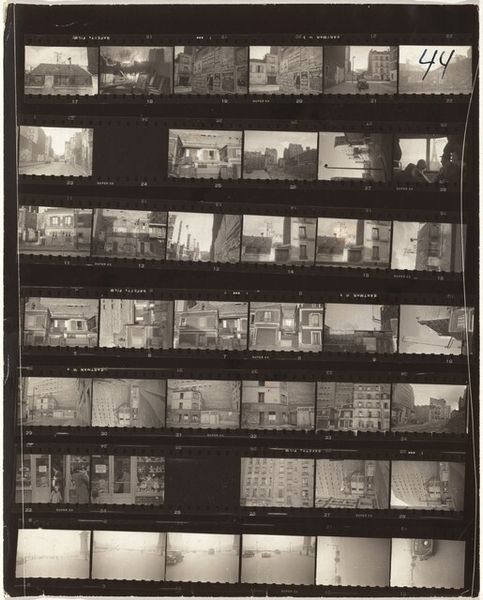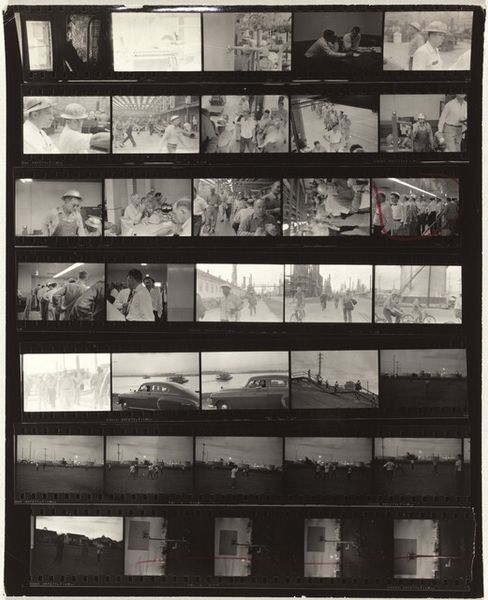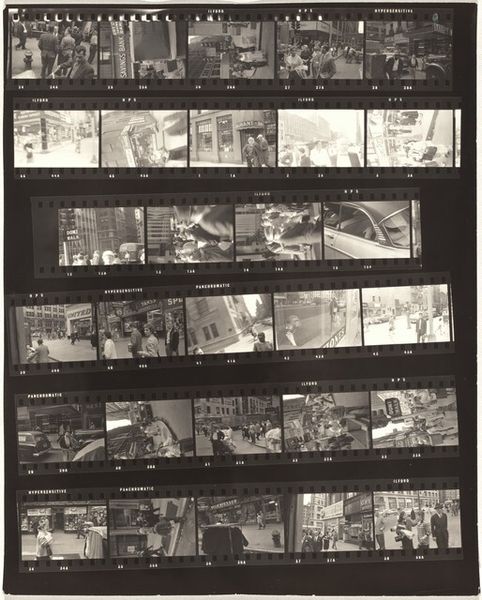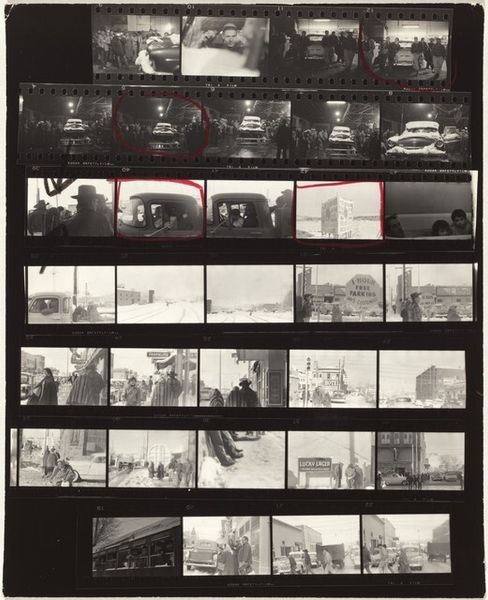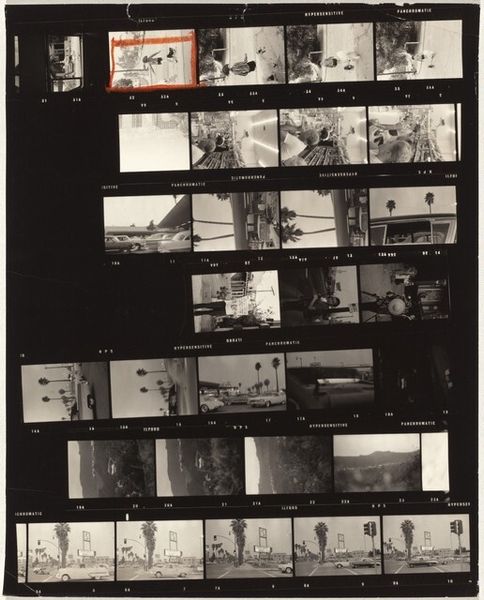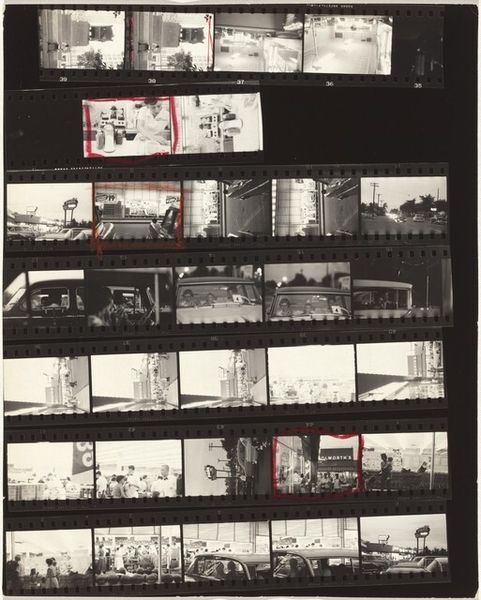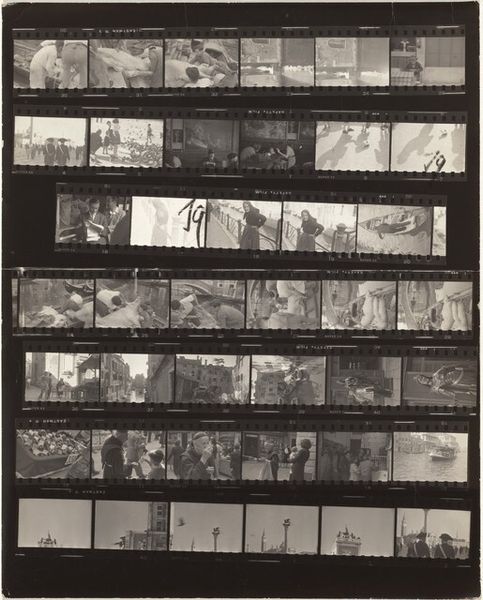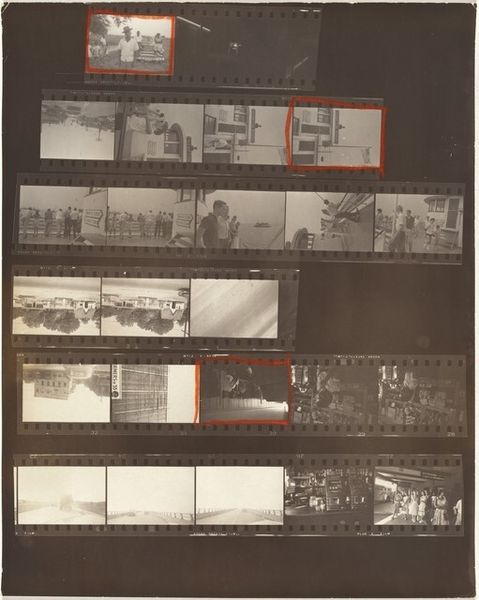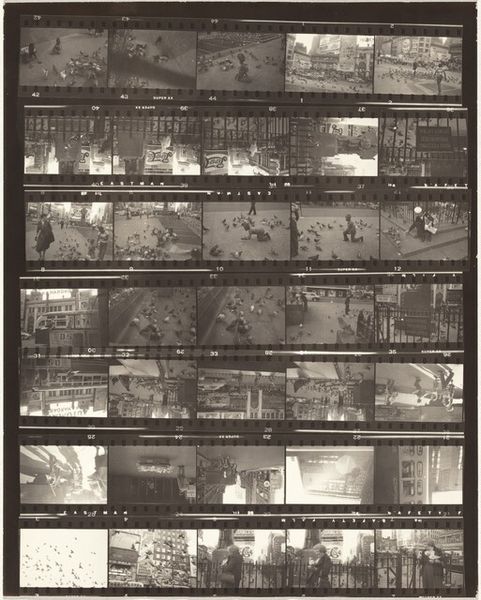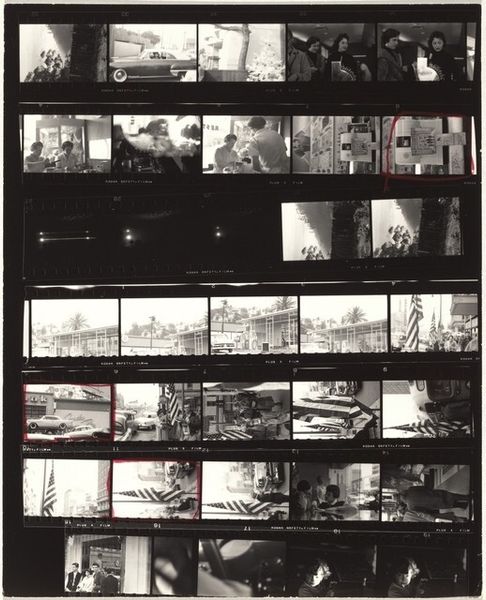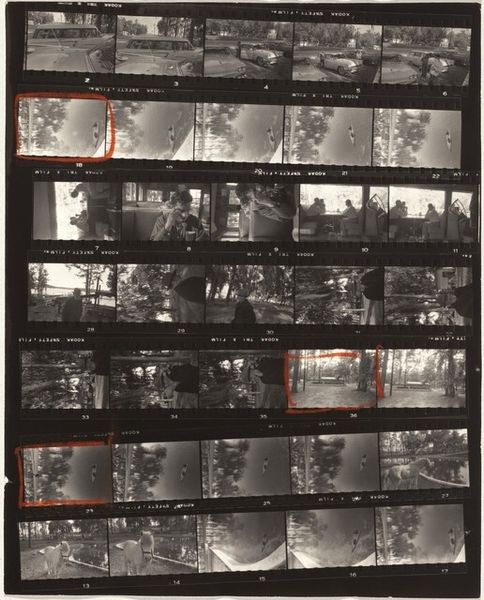
Dimensions: overall: 25.3 x 20.5 cm (9 15/16 x 8 1/16 in.)
Copyright: National Gallery of Art: CC0 1.0
Curator: Let's turn our attention to Robert Frank's "Guggenheim 409--Los Angeles," a gelatin-silver print made between 1955 and 1956. It presents itself as a contact sheet, revealing Frank's working process and photographic choices. Editor: It strikes me as a fragmented narrative, a series of glimpses. There is a cinematic quality. Each frame feels loaded with untold stories, yet held together by an unmistakable atmosphere of 1950s America. Curator: The contact sheet format is key here. It foregrounds the labor involved—the act of selecting and discarding images in the darkroom. Frank wasn't just capturing a moment but crafting a commentary on visual representation. Consider how the rows of images echo the repetitive nature of urban life and also his method. Editor: Absolutely. And within that structure, individual images resonate with iconic American themes: lunch counters, city streets bustling with cars, even what appears to be the Guggenheim Museum itself. These elements seem to reflect mid-century optimism tinged with a sense of detachment, something the grainy, high-contrast black and white reinforces. Curator: The graininess indeed underscores the realness of the images and also a deliberate departure from pristine commercial photography of the time. This raw quality speaks to Frank's critical perspective on American society and challenges the consumerism of that era. What meanings do you extract from this raw perspective? Editor: I see a layering of meaning. Frank captures physical spaces and social moments. These visual icons simultaneously convey a sense of place and something far less tangible: alienation, uncertainty, the subtle unease beneath the surface of post-war American prosperity. He suggests this through symbolic composition rather than directly representational figures. Curator: Precisely, he offers a potent mix of social critique through its direct representation in gelatin silver—cheap to reproduce, widely accessible. And the method of using a contact sheet to emphasize how photographs are made is, to me, a vital commentary in our increasingly image-saturated world. Editor: Looking at this contact sheet has been thought-provoking. Frank masterfully weaves cultural and personal narratives into an exploration of modern urban experience, reminding us of the loaded significance images have and continue to carry.
Comments
No comments
Be the first to comment and join the conversation on the ultimate creative platform.

